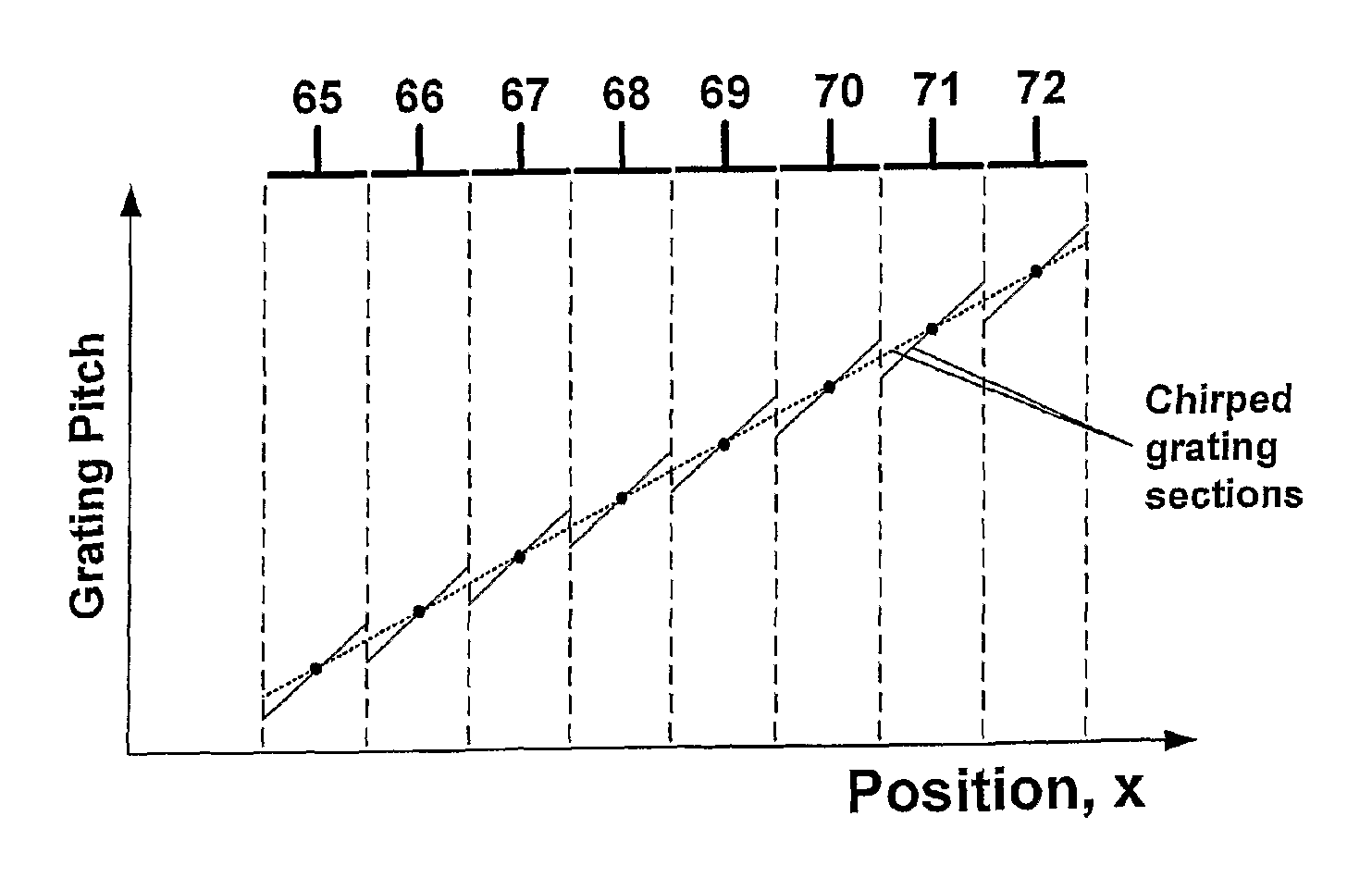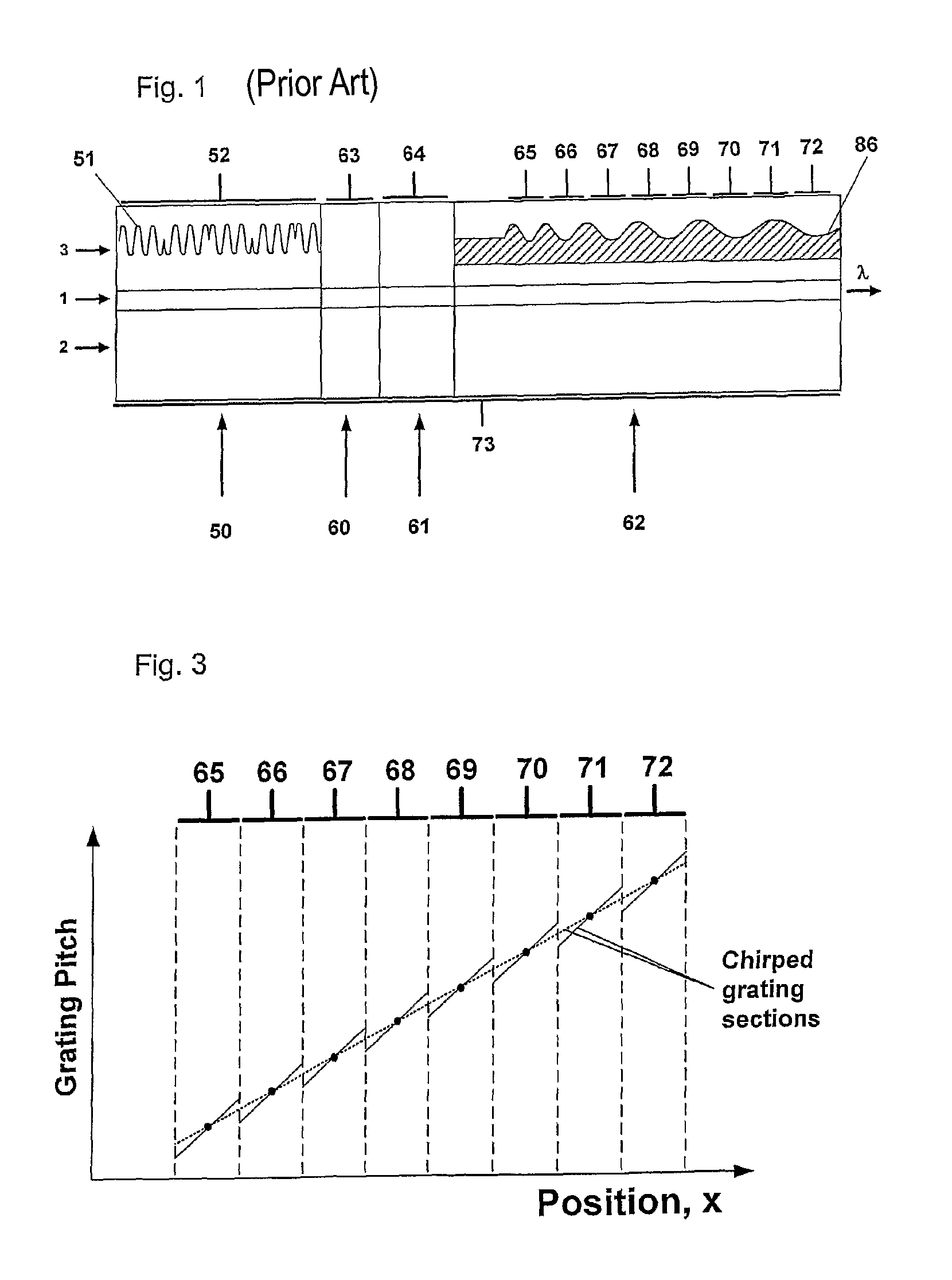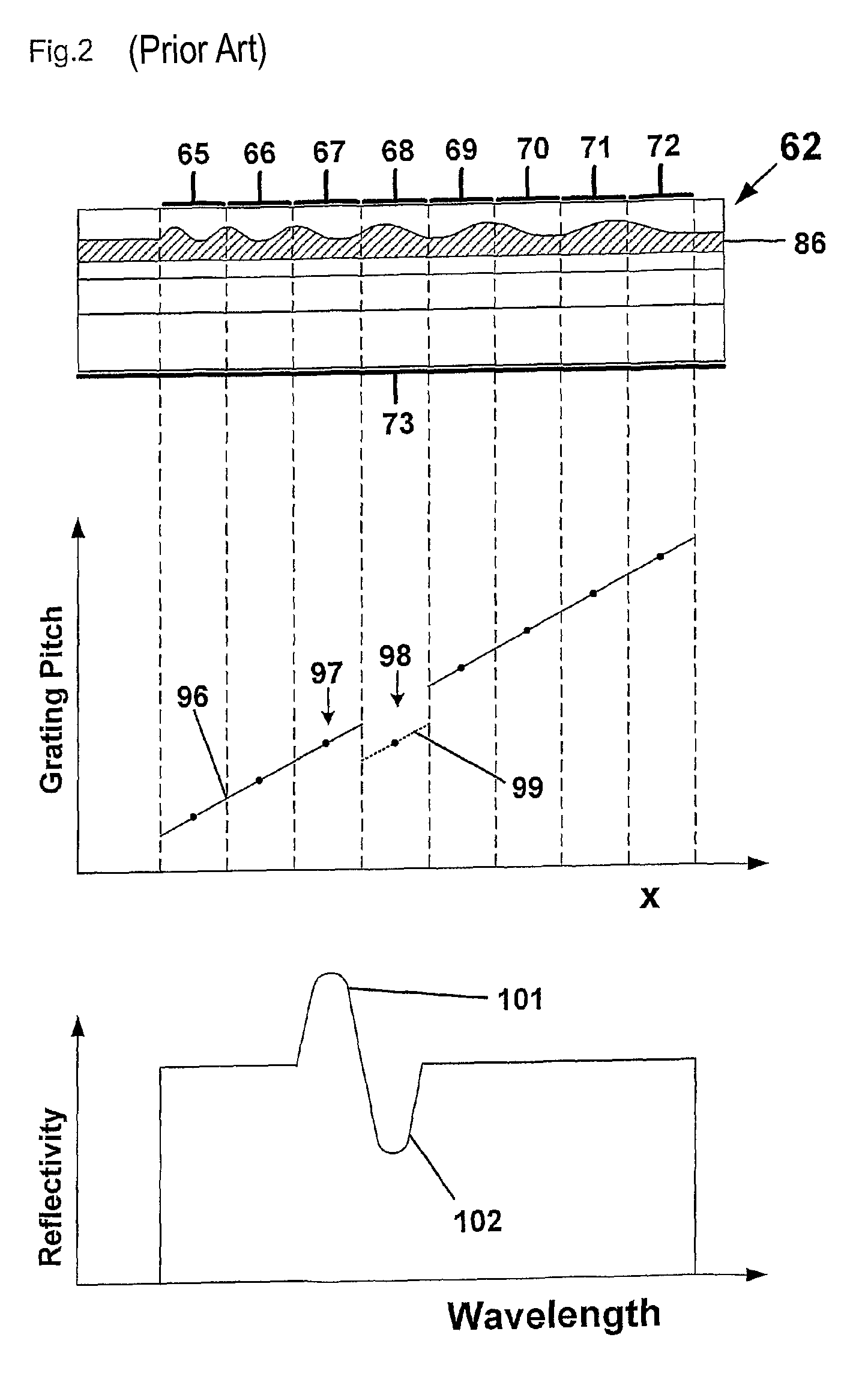Bragg reflector grating
a reflector and grating technology, applied in the field of bragg reflector gratings, can solve the problems of general difficulty in distinguishing the effect of one section from the other, and achieve the effects of increasing the pitch range, and increasing the pitch rang
- Summary
- Abstract
- Description
- Claims
- Application Information
AI Technical Summary
Benefits of technology
Problems solved by technology
Method used
Image
Examples
Embodiment Construction
[0040]FIGS. 1 and 2 are described above.
[0041]FIG. 3 is a schematic diagram, similar to the type of diagram included in FIG. 2, showing the variation in grating pitch of an embodiment of a distributed Bragg reflector grating according to the invention. In particular, the diagram shows the variation in grating pitch as a function of position along the grating. The entire grating includes eight chirped grating sections, each of which has a respective electrical contact (electrode) associated with it, indicated by the reference numerals 65-72. The variation in grating pitch for a known monotonically chirped grating (also comprising eight chirped grating sections of corresponding length) is indicated, for comparison, by the dotted line. Each of the chirped grating sections of the grating according to the invention is shown to have a greater range of grating pitches than a corresponding chirped grating section of a conventional grating with the same profile of median grating pitches. Con...
PUM
 Login to View More
Login to View More Abstract
Description
Claims
Application Information
 Login to View More
Login to View More - R&D
- Intellectual Property
- Life Sciences
- Materials
- Tech Scout
- Unparalleled Data Quality
- Higher Quality Content
- 60% Fewer Hallucinations
Browse by: Latest US Patents, China's latest patents, Technical Efficacy Thesaurus, Application Domain, Technology Topic, Popular Technical Reports.
© 2025 PatSnap. All rights reserved.Legal|Privacy policy|Modern Slavery Act Transparency Statement|Sitemap|About US| Contact US: help@patsnap.com



